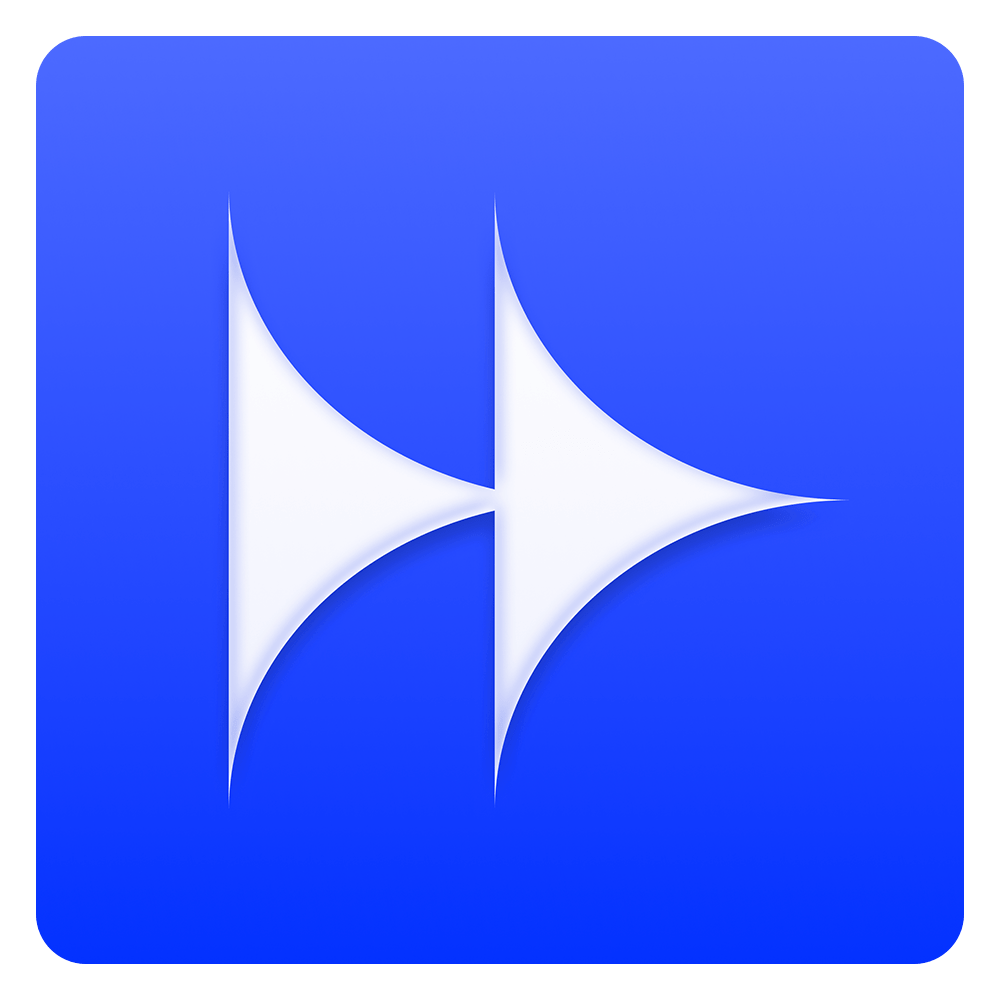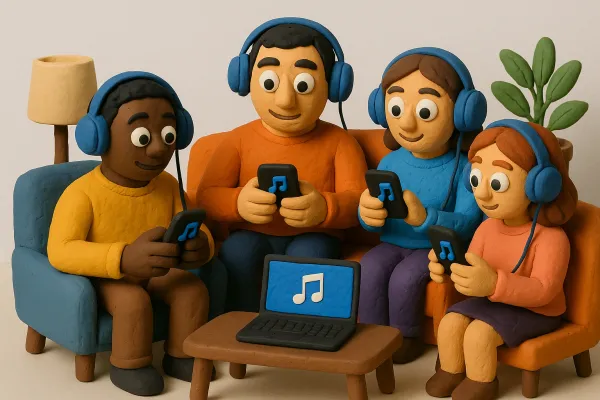Mastering the Art: How to Pitch Songs to Spotify Playlists in 2025

Getting your music on Spotify playlists can feel like cracking a secret code. It's not just about luck; it takes strategy and knowing the right moves. In 2025, the game has changed, but the goal remains the same: getting your tunes heard by the right ears. Whether you're an indie artist or a seasoned musician, understanding how to pitch songs to Spotify playlists is crucial for your success. This guide will walk you through the steps to make your music stand out and land those coveted playlist spots.
Key Takeaways
- Understand the difference between editorial and algorithmic playlists on Spotify.
- Craft pitches that resonate with curators by highlighting what makes your music unique.
- Avoid common pitfalls like spamming curators or submitting incomplete information.
- Use data insights to tailor your pitches and improve your odds of being featured.
- Stay updated on emerging trends and technologies in music promotion.
Understanding Spotify's Playlist Ecosystem
Editorial vs. Algorithmic Playlists
Alright, let's break down the Spotify playlist world. There are mainly two types of Spotify playlists: editorial and algorithmic. Editorial playlists are those curated by actual humans at Spotify. They have a massive following and can really boost your track's visibility. But here's the kicker: you can't just send an email to these curators. Nope, it's all about getting noticed through organic growth and smart use of the platform. On the other hand, algorithmic playlists are generated based on listener habits and trends. Think Discover Weekly or Release Radar. They automatically update and can get your music in front of the right audience based on data.
The Role of Independent Curators
Now, don't forget about the independent curators. These are the folks running playlists outside of Spotify's direct control. Bloggers, music enthusiasts, and sometimes even small labels manage these playlists. They can be a bit more accessible than Spotify's editorial team. It's all about finding the right match for your music style and building a relationship with them. Often, these curators have a specific taste or niche they're catering to, so do your homework before reaching out.
How Playlists Influence Music Discovery
Playlists are like the new-age radio stations. They have a huge influence on what music people discover and listen to. When your song lands on a popular playlist, it can lead to a surge in plays, new followers, and even more playlist adds. It's a chain reaction. The more exposure you get, the more Spotify's algorithm notices, which could potentially land you on even more playlists. So, getting playlisted is not just about the immediate boost; it's about setting off a series of events that can grow your presence on the platform. For more tips on getting your music out there, check out our guide on mastering Spotify in 2025.
Crafting the Perfect Pitch for Spotify
What Curators Look For
Alright, so you're ready to pitch your song to Spotify playlists. But what exactly are the curators looking for? First off, authenticity is key. They want to hear something unique, something that stands out from the crowd. It's not just about having a catchy tune; it's about having a story or vibe that resonates. Make sure your song fits the playlist's theme or mood, and highlight this in your pitch. Curators love when artists can articulate why their track belongs on their playlist.
Common Mistakes to Avoid
We've all been there, trying to make a great impression but somehow fumbling the ball. When pitching to Spotify, avoid these common pitfalls:
- Generic Pitches: Don't send out a one-size-fits-all pitch. Personalize it for each playlist.
- Ignoring Metadata: Make sure your track's metadata is spot on. Incorrect info can get your pitch tossed aside.
- Overhyping: Be genuine about your song's potential. Overhyping can come off as insincere.
Using Spotify for Artists Effectively
If you're not using Spotify for Artists, you're missing out big time. This tool is your direct line to Spotify's editorial team. Here's how to make the most of it:
- Update Your Profile: Keep your artist profile fresh and engaging.
- Pitch Your Tracks: Use the 'Music' tab to pitch your latest releases directly to Spotify's editors.
- Analyze Your Data: Dive into the stats to see how your music is performing and adjust your strategy accordingly.
Remember, pitching to Spotify is like planting seeds. It takes time and effort, but with the right care, your music can bloom across playlists worldwide.
Building Relationships with Playlist Curators
Finding the Right Curators
First off, we need to know who we're dealing with. Not all playlist curators are created equal, and finding the right fit is crucial. Start by targeting user playlists that align with your music style. Here’s a quick rundown on how to find them:
- Use Playlist Directories: Check out sites like SubmitHub or PlaylistSupply. They list verified curators who might be interested in your genre.
- Search on Spotify: Look for playlists that match your music, then dig into the curator’s info. Often, you’ll find their contact details in the playlist description or on their social media.
- Google Their Nicknames: Sometimes a simple search can lead you to their profiles on other platforms. It’s a bit of detective work, but worth it.
Networking on Social Media
Once you’ve got a list of potential curators, it’s time to make some noise on social media. Engaging with curators online can be a game-changer:
- Interact with Their Posts: Don’t just lurk; like, comment, and share their content. It shows you’re genuinely interested.
- Join Conversations: Whether it's on Twitter or Instagram, jump into discussions they’re part of. Just be yourself and keep it casual.
- Build a Rapport Before Pitching: Don’t rush into pitching. Get to know them a bit first. It’s like making a new friend.
Following Up Without Being Annoying
Okay, so you’ve sent your pitch. Now what? Following up is key, but there’s a fine line between being persistent and being a pest.
- Wait a Few Weeks: Give them some time. If you haven’t heard back in two or three weeks, it’s okay to send a gentle reminder.
- Be Polite and Brief: Keep your follow-up short and sweet. No one likes a long-winded email.
- Respect Their Decision: If they’re not interested, thank them for their time and move on. You’ll get ‘em next time!
Building relationships with playlist curators is like planting seeds. It takes time and patience, but with the right approach, your music will find its way to the right ears. Remember, this journey is all about connecting with people who love music as much as you do. Keep it real and keep it fun.
Leveraging Data to Boost Your Playlist Chances
Analyzing Your Spotify Stats
Alright, folks, let's talk numbers. We all know that data is king, and when it comes to Spotify, it's no different. Diving into your Spotify stats can be a game-changer. Understanding your streaming data means understanding your audience. Check out which songs are getting the most plays, where your listeners are tuning in from, and what playlists are already featuring your tracks. This info isn't just cool to know—it’s your secret weapon for pitching.
Understanding Playlist Trends
Trends come and go, but keeping an eye on what's hot in playlists can give you an edge. Are there certain genres or themes that are getting more traction? Maybe acoustic covers are all the rage, or perhaps there's a surge in 90s nostalgia. By aligning your pitches with these trends, you're not just throwing your music into the void. You're strategically placing it where it's most likely to get picked up.
Using Third-Party Tools for Insights
Sometimes, you need a little extra help, and that's where third-party tools come in. Tools like Chartmetric or Soundcharts can provide deeper insights into playlist dynamics and audience behavior. They can tell you which playlists are gaining followers or which curators are on the rise. With this kind of intel, you're not just guessing—you're making informed decisions. Plus, these tools can highlight opportunities you might miss on your own.
The more you know about your music's performance and the playlist landscape, the better your chances of landing that coveted spot. Data isn't just numbers; it's the story of your music's journey.
Remember, folks, using data effectively can be the difference between your song getting lost in the shuffle and it becoming the next big hit. So, let's get those analytics working for us and boost our chances on Spotify playlists!
Maximizing Your Song's Appeal Before Pitching
Perfecting Your Track's Metadata
Alright, let's get into the nitty-gritty of metadata. It's not just about tagging your track with a genre and calling it a day. Nope, we're talking about the full package—song title, artist name, release date, and all those little details that make your track easily discoverable. Think of metadata as your song's DNA—it tells Spotify who you are and what you're about. Double-check everything for accuracy because one typo can throw off the whole game. And hey, if your track has a cool backstory, mention it! Curators love a good narrative.
Creating Engaging Cover Art
First impressions count, right? Your cover art is the first thing people see, so make it pop. You don't need to be Van Gogh to create something eye-catching. Just keep it relevant to your music and make sure it looks good as a thumbnail—because that's how most people will see it. A pro tip? Use colors that stand out but don't clash. And if you're really stuck, consider hiring a designer who gets your vibe.
Timing Your Release Strategically
Timing is everything, folks. You can't just drop your track whenever you feel like it and hope for the best. Take a look at your calendar and think about when your audience is most active. Are they more likely to listen on a Friday night or a Monday morning? Plan your release around those peak times to maximize your reach. It's also smart to coordinate with any other promotions you have going on, like creating an effective artist playlist on Spotify to give your new release a little extra push.
Before you pitch, make sure your track is in top shape—both in sound and presentation. It's like dressing up for a big interview; you want to make the best impression possible. So, polish that sound, nail that cover art, and choose your release date wisely. It's all about setting the stage for success.
The Future of Playlist Pitching in 2025
Emerging Trends to Watch
Alright, folks, let's talk about what's cooking in the world of playlist pitching. AI is taking center stage, making it easier for artists to find the right playlists. We're talking smarter algorithms that match your tracks with playlists that fit like a glove. It's like having a personal assistant who knows all the right people.
- AI-Powered Tools: These tools analyze your music and suggest the best playlists to pitch.
- Data-Driven Decisions: Numbers don't lie. Use them to figure out which playlists are worth your time.
- Collaborative Playlists: More artists are teaming up to create playlists, boosting each other's exposure.
The Impact of AI on Music Promotion
AI isn't just a buzzword; it's changing the game. With AI, you can tailor your pitches to be more personal and targeted. Imagine knowing exactly what a curator loves and pitching them the perfect track. It's like having a crystal ball for your music career.
In a world where AI can predict trends and preferences, staying ahead means embracing these tools and using them to your advantage.
How to Stay Ahead in the Playlist Game
Staying ahead in 2025 means being proactive. Use the top 12 platforms to get your music heard by the right audience. Keep your ear to the ground and adapt to new tech as it comes. Remember, the early bird catches the worm, or in this case, the playlist spot.
- Stay Informed: Know what's new and what's next in the playlist world.
- Be Adaptable: Technology changes fast—keep up or get left behind.
- Network Smartly: Build connections with curators and other artists to expand your reach.
Real-Life Success Stories: Artists Who Nailed It
Lessons from Breakout Hits
Sometimes, the stars just align for certain tracks, and they become huge hits. We've seen artists who crafted a song in their bedroom, only to watch it explode on Spotify playlists. But what sets these tracks apart? It's often the authenticity and relatability of the music. Take, for example, the artist who captured the essence of a summer romance in just three minutes. It wasn't just about catchy tunes; it was about connecting with listeners on a personal level.
Strategies That Worked
- Consistency is Key: Many artists found success by releasing music regularly. This keeps their audience engaged and always expecting more.
- Engage with Fans: Building a loyal fan base can make all the difference. Artists who actively communicate with their fans on social media often see better playlisting results.
- Utilize Tools: Platforms like Campaign Kit offer tools like playlist pitching that can transform casual listeners into dedicated fans.
Inspiring Journeys to Playlist Stardom
Not every artist's journey is overnight. Some have been grinding for years before hitting the jackpot. There’s the story of an indie artist who played small gigs for nearly a decade before a single playlist feature catapulted them into the spotlight.
"It's about persistence and passion. You might not get on the biggest playlist right away, but every small step counts."
These stories remind us that success in the music industry is often a marathon, not a sprint. Keep pushing, keep creating, and who knows? Your next track might just be the one to break through.
In the world of art, many talented individuals have achieved amazing things. Their stories inspire us to follow our dreams and work hard. If you want to learn more about these incredible artists and how they made it big, visit our website! Discover their journeys and get motivated to chase your own goals!
Wrapping It Up: Your Playlist Pitching Journey
Alright, so there you have it! Getting your tunes onto Spotify playlists in 2025 isn't some mystical art, but it does take a bit of hustle and know-how. Remember, it's all about making those connections, understanding what curators are looking for, and presenting your music in the best light possible. Sure, it might feel like you're shouting into the void sometimes, but keep at it. Every pitch is a step closer to that playlist spot. So, keep your head up, stay creative, and who knows? Your next track might just be the one that catches fire. Good luck out there, and happy pitching!
Frequently Asked Questions
What is a Spotify playlist?
A Spotify playlist is a collection of songs that a user or curator puts together. These playlists can be shared and followed by others on the platform.
How do I get my song on a Spotify playlist?
To get your song on a Spotify playlist, you need to pitch it to playlist curators or use Spotify for Artists to submit your track for consideration.
What are editorial playlists on Spotify?
Editorial playlists are curated by Spotify's in-house team. They are highly influential and can significantly boost a song's visibility.
Can anyone create a playlist on Spotify?
Yes, any Spotify user can create their own playlists and share them with friends or make them public for others to follow.
What is Spotify for Artists?
Spotify for Artists is a tool that helps musicians manage their presence on Spotify. It includes features for tracking performance and pitching songs to playlists.
Why are playlists important for musicians?
Playlists are important because they help musicians reach new listeners and can lead to more streams, followers, and fans.





